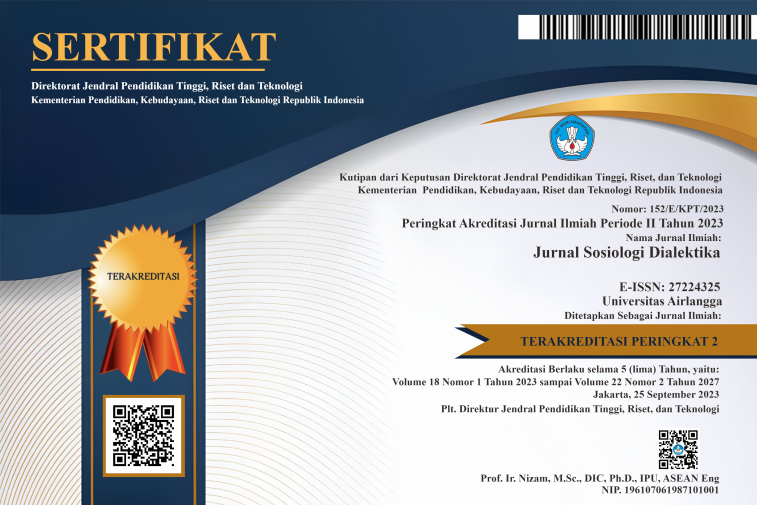Non-governmental organization's contribution to women small-scale farmers: A case study of Tchenzema ward, Morogoro, Tanzania
Downloads
Tanzanian women play a vital role in the country's development and industrialization. Tanzania's agriculture is considered the country's backbone, but women are the driving force behind small-scale farming. This study aims to identify the types of NGOs that support women, small-scale farmers, to investigate the effects of NGOs, and the challenges that small-scale farmers face in Tchenzema ward. The transition and growth model development theory, and patriarchy theory, were used in the study. The study revealed that poor transportation, crop illnesses and insects, lack of pesticides, price fluctuation, lack of energy, and high agricultural equipment prices are some of the issues faced by women small-scale farmers in Tchenzema ward. This study concludes that the lack of collaboration between the Tanzanian government and farmers causes farmers to only rely on NGOs. The government and non-governmental organizations need to support women small-scale farmers so as to solve the challenges, and raising the output, hence let the agriculture sector achieves its national aim of economic growth.
Achandi EL, Kidane A, Hepelwa A, & Mujawamariya G (2019) Women's empowerment: The case of smallholder rice farmers in Kilombero District, Tanzania. Agrekon 58 (3):324-339. https://doi.org/10.1080/03031853.2019.1587484.
Adam J & Kamuzora F (2008) Research for Business and Social Studies. Morogoro: Mzumbe Book.
Agunga R, Sanga CA, & Isaya E (2018) Empowering women farmers in Tanzania through communication for development. World Journal of Social Science 5 (2):1-8. https://doi.org/10.5430/wjss.v5n2p8.
Amos M (2012) Socio-economic factors influencing conservation and development trade-offs on Uluguru mountains, Tanzania. Dissertation, Sokoine University of Agriculture, Morogoro.
Anderson J, Learch CE, & Gardner ST (2016) National survey and segmentation of smallholder households in Bangladesh: Understanding their demand for financial, agricultural and digital solutions. CGAP Working Paper, April 101.
Bellows A, Callenius C, Campeau C, Cedeno MA, & Wolpod-Bosien M (2013) Right to Food and Nutrition Watch: Alternatives and Resistance to Policies that Generate Hunger. Berlin: Wilma Strothenke.
Cooksey B (2013) The Comprehensive Africa Agriculture Development Programme (CAADP) and agricultural policies in Tanzania: Going with or against the grain? FAC Political Economy of Agricultural Policy in Africa (PEAPA), 1-46.
Finkelstein DM (2005) A beginner's guide. Technometrics 47 (4):522-522.
Huka H, Ruoja C, & Mchopa A (2014) Price fluctuation of agricultural products and its impact on small scale farmers development: Case analysis from Kilimanjaro Tanzania. European Journal of Business and Management 6 (36):155-161.
Isaya EL, Agunga R, & Sanga CA (2018). Sources of agricultural information for women farmers in Tanzania. Information Development 34 (1):77-89. https://doi.org/10.1177/0266666916675016.
Ish-Shalom P (2006) Theory gets real, and the case for a normative ethic: Rostow, modernization theory, and the alliance for progress. International Studies Quarterly 50 (2):287-311. doi:10.1111/j.1468-2478.2006.00403.x.
Jones MP & Sanyang S (2007) Promotion inclusion of civil society organizations (CSOs) in African Agricultural Research and Development. Brighton: University of Sussex, Institute of Development Studies.
Khan S (2015) Sustainable local economic development (LED) and rural land reform challenges and prospects in post-apartheid South Africa-A policy perspective. Journal of Economics 6 (1):8-17.
Kothari CR (2004) Research Methodology: Methods and Techniques New Delhi: India.
Leavens, Kennedy M, & Anderson L (2011) Gender and Agriculture in Tanzania. Gates Open Research 3:1-14.
Massay EM (2021) A review on the prevailing gaps in women's sexual and reproductive health rights in Tanzania's National Health Policy 2017. Jurnal Sosiologi Dialektika 16 (1):1-11.
Matata PZ, Ajay OC, Oduol PA, & Agumya A (2010) Socio-economic factors influencing adoption of improved fallow practices among smallholder farmers in western Tanzania. African Journal of Agricultural Research 5 (9):818-823. https://doi.org/10.5897/AJAR.9000639.
Ministry of Finance of Economic Affairs (2010) National Strategy for Growth and Reduction of Poverty (NSGRP II). Tanzania: United Republic of Tanzania.
Misaki E, Apiola M, & Gaiani S (2016) Technology for small scale farmers in Tanzania: A design science research approach. The Electronic Journal of Information Systems in Developing Countries 74 (1):1-15.
Muhanji G, Roothaert RL, Webo C, & Stanley M (2011) African indigenous vegetable enterprises and market access for small-scale farmers in East Africa. International Journal of Agricultural Sustainability 9 (1):194-202. https://doi.org/10.3763/ijas.2010.0561.
MVIWATA (2013) Annual Report 2013. Morogoro: MVIWATA.
Pretty J, Toulmin C, & Williams S (2011) Sustainable intensification in African agriculture. International Journal of Agricultural Sustainability 9 (1):5-24. https://doi.org/10.3763/ijas.2010.0583.
Stuetz W, Gowele V, Kinabo J, Bundala N, Mbwana H, Rybak C, Eleraky L, Lambert C, & Biesalski HK (2019) Consumption of dark green leafy vegetables predicts vitamin a and iron intake and status among female small-scale farmers in Tanzania. Nutrients 11 (5):1-18. https://doi.org/10.3390/nu11051025.
Szelenyi I (2008) A theory of transitions. Modern China 34 (1):165-175. https://doi.org/10.1177/0097700407308133.
Tiernan M & Nelson C (2013) Women in Tanzania Agribusiness: Case Studies of Women in Tanzanian Agribusiness. Tanzania: The Women in Public Service Project.
Copyright (c) 2021 Jurnal Sosiologi Dialektika

This work is licensed under a Creative Commons Attribution-NonCommercial-ShareAlike 4.0 International License.
1. Copyright of this journal is possession of Editorial Board and Journal Manager, by the knowledge of author, whilst the moral right of the publication belongs to the author.
2. Legal formal aspect of journal publication accessibility refers to Creative Commons Attribution-NonCommercial-ShareAlike (CC BY-NC-SA), implies that publication can be used for non-commercial purposes in its original form (cannot be modified).
3. Every publications (printed/electronic) are open access for educational purposes, research, and library. Other that the aims mentioned above, editorial board is not responsible for copyright violation.















